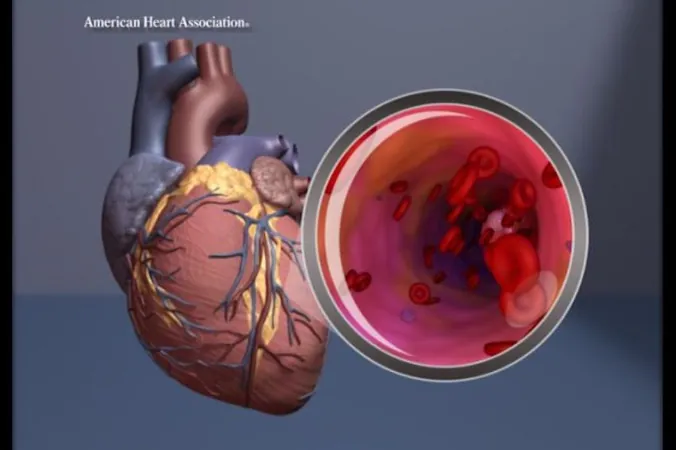
Heart Disease Evolution: A Surprising Shift in Causes of Death
2025-06-25
Author: Ming
Heart Disease: Still the Leading Threat to Life
Despite significant medical advances, heart disease remains the leading cause of death in the U.S., a title it has held for over a century. However, a groundbreaking study from the Journal of the American Heart Association reveals that the landscape of heart disease-related mortality is changing dramatically.
Dramatic Decline in Heart Attack Deaths
Over the last 50 years, heart disease death rates have plummeted by an impressive 66%. Deaths from heart attacks—once the most common reason for heart disease fatalities—have decreased by nearly 90%. This remarkable shift is largely attributed to innovative public health initiatives and improved medical interventions that emphasize prevention and early diagnosis.
New Leaders in Heart Disease Deaths
While heart attacks have taken a back seat, other forms of heart disease are on the rise. The study indicates a notable increase in deaths related to heart failure, arrhythmias, and hypertensive heart disease. Researchers analyzed data from the CDC and found stark contrasts in causes of death, highlighting an alarming trend.
The Numbers Behind the Shift
From 1970 to 2022, heart disease accounted for nearly one-third of all deaths. Yet, the death rate from heart disease fell from 41% of total deaths in 1970 to just 24% in 2022. Interestingly, the percentage of deaths caused by heart attacks dropped from 54% to 29%, while deaths from other heart conditions surged.
Emerging Challenges in Heart Health
Sara King, M.D., the study's lead author, emphasizes the duality of progress: although we've excelled at managing acute cardiac events, the rise in deaths from chronic conditions like heart failure and arrhythmias presents new hurdles for the healthcare community. Arrhythmias, with a staggering 450% increase in death rates, still only accounted for 4% of heart disease deaths, while heart failure and hypertensive heart disease saw sharp increases of 146% and 106%, respectively.
Advancements in Cardiac Care
The last five decades have witnessed transformative changes in cardiac care—from the development of surgical procedures like bypass grafting to enhanced medical therapies that have became crucial during emergencies. Improvements in CPR training and the availability of automated external defibrillators have increased survival rates, making once-fatal conditions manageable.
The Role of Public Health Initiatives
Significant public health measures, including smoke-free policies and improvements in diet and exercise routines, have played a vital role in reducing overall heart disease deaths. However, the study authors warn of rising risk factors like obesity, diabetes, and hypertension, which are contributing to the increased prevalence of other heart diseases.
A Call to Action for Future Generations
Looking ahead, experts stress the importance of focusing on long-term heart health. Treating chronic conditions, promoting healthy lifestyles from childhood, and improving access to healthcare are critical steps needed to reduce the burden of heart disease. As we celebrate the achievements in reducing heart attack deaths, the fight against heart disease is far from over.
Conclusion: The Fight Continues
The study underscores an urgent need to adapt healthcare strategies to address emerging forms of heart disease and educate communities on maintaining heart health as they age. With the American Heart Association paving the way for improved research and public health initiatives, the battle against heart disease continues, aiming for not only survival but a life lived with a healthy heart.


 Brasil (PT)
Brasil (PT)
 Canada (EN)
Canada (EN)
 Chile (ES)
Chile (ES)
 Česko (CS)
Česko (CS)
 대한민국 (KO)
대한민국 (KO)
 España (ES)
España (ES)
 France (FR)
France (FR)
 Hong Kong (EN)
Hong Kong (EN)
 Italia (IT)
Italia (IT)
 日本 (JA)
日本 (JA)
 Magyarország (HU)
Magyarország (HU)
 Norge (NO)
Norge (NO)
 Polska (PL)
Polska (PL)
 Schweiz (DE)
Schweiz (DE)
 Singapore (EN)
Singapore (EN)
 Sverige (SV)
Sverige (SV)
 Suomi (FI)
Suomi (FI)
 Türkiye (TR)
Türkiye (TR)
 الإمارات العربية المتحدة (AR)
الإمارات العربية المتحدة (AR)